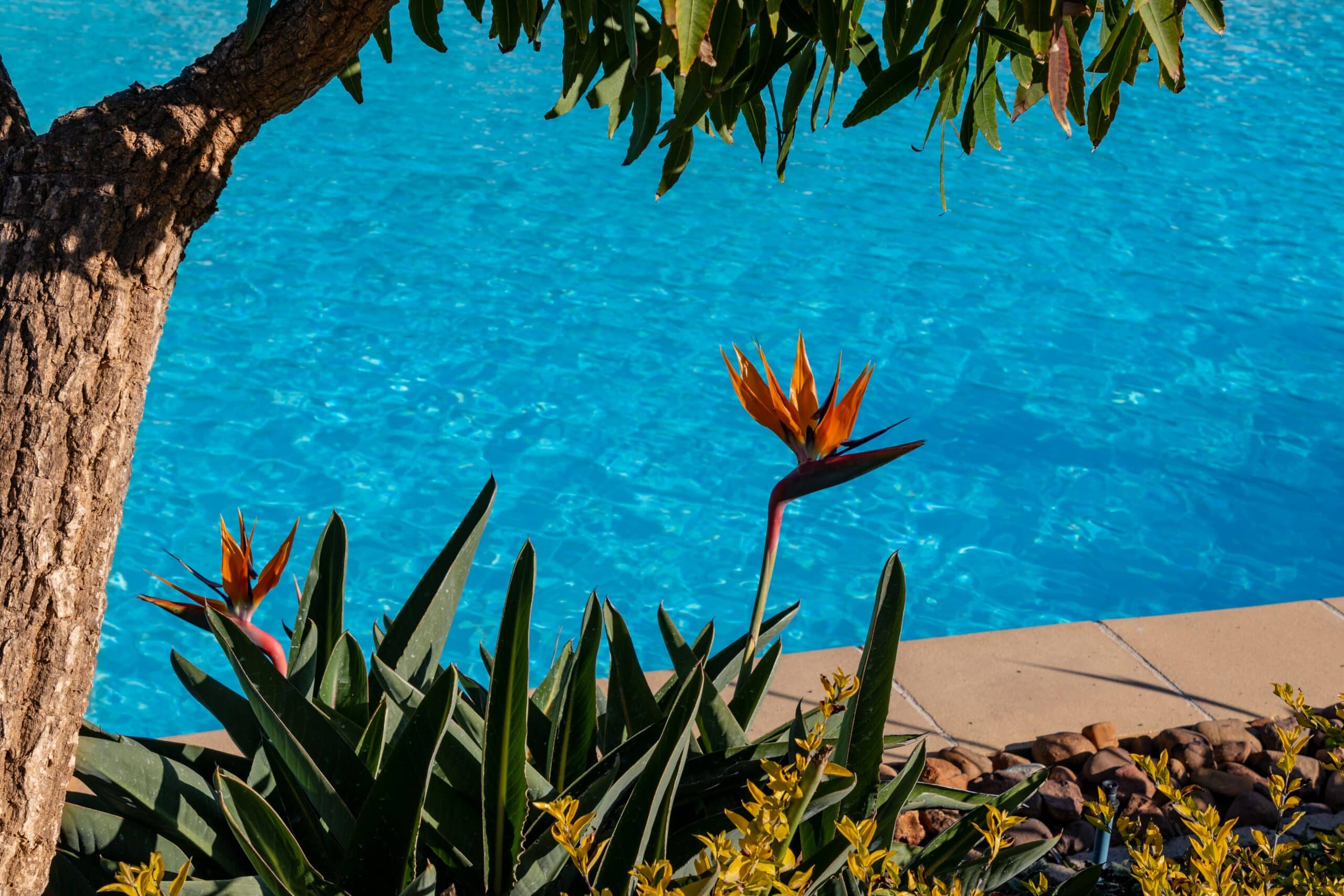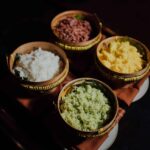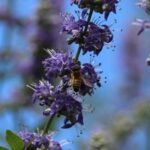Are you tired of the same old, boring plants that just sit around and do nothing all day? If so, then it’s time to meet the Autograph Tree – a plant that literally signs its name! This amazing species of Clusia is sure to be the life of any party. Not only does it look great, but it also provides plenty of care and attention for those who want to show their plants some love. Read on to learn how to grow and care for your own Autograph Tree!
As a specialist in botany and gardening, I am often asked about the best way to take care of unique plants. The Autograph Tree is one such plant; it is an evergreen shrub with glossy foliage and beautiful white flowers that can literally sign its own name! It is native to Central America but can be grown indoors or outdoors in many climates. Its genus name – Clusia – comes from the Latin word for ‘closed’, which refers to its distinctive fruits which open when mature.
Caring for this unusual tree requires patience, but the rewards are well worth it. With proper watering, pruning, and repotting techniques, you can maintain a healthy Autograph Tree that will bring joy and beauty into your home or garden. In this article, we will explore the basics of growing and caring for this remarkable species so that you can enjoy its unique features all year round.
Overview Of Autograph Tree
The autograph tree is a unique and magical plant that can bring beauty, elegance and longevity to any home. It’s an absolute miracle of nature, with its glossy leaves, delicate flowers and signature ‘autograph’ marks. If you’re looking for the perfect houseplant, then the autograph tree should be at the top of your list!
Caring for an autograph tree is not difficult – all it needs is the right amount of light, water, and nutrients to thrive. Place it in a spot where it will get bright indirect sunlight or filtered light – direct sun can burn its leaves. Water it when the soil feels dry to the touch – usually once or twice a week depending on how warm or dry your climate is. And provide regular fertilizer during active growth periods.
The autograph tree is an ideal choice for anyone looking to add a little bit of beauty and life to their home. Not only does it look stunning with its glossy leaves and delicate flowers, but it’s also relatively simple to care for. With just a bit of knowledge and effort you can easily grow this majestic plant indoors – and enjoy its lush foliage for years to come!
Selecting A Plant
Are you looking for the perfect plant to spruce up your home or office? The autograph tree—also known as Clusia species—is a beautiful, low-maintenance plant that can be enjoyed indoors and out. But before jumping into growing one of these gorgeous plants, it is important to know how to select the right autograph tree.
When selecting an autograph tree, it is important to consider size. These plants can grow quite large in their natural environment, so be sure to find one that will fit your space. Additionally, check for any signs of disease or pest infestation on the leaves or stems of the plant before purchasing. If there are any issues, look for another plant that is free from infestations and diseases.
Lastly, pick a potting soil that is rich in organic matter and well-draining but not too dry. Autograph trees need some moisture in order to thrive, but do not want to be sitting in waterlogged soil either. A soil mix specifically for tropical plants should do the trick! With careful selection and proper care, your autograph tree will flourish and bring beauty into your home or office.
Planting And Potting
Planting and potting is an important step in growing and caring for an autograph tree. Interestingly, the autograph tree has a root system that grows nearly as quickly as it does aboveground. Therefore, it’s important to choose an appropriately sized pot with plenty of room for the roots to expand.
As a specialist in botany and gardening, I recommend using a soil-less potting mix that drains well and contains some organic matter. It’s also important to consider the container’s shape; a wider base is more stable than one that tapers at the bottom. Additionally, be sure to provide drainage holes in the bottom of the container so excess water can escape when watering your plant.
When planting your autograph tree, make sure it sits slightly higher than the lip of the container. As it grows, you may need to transplant your plant into a bigger pot or divide clumps if they become too large. With this in mind, keep your eye out for signs that your plant needs repotting or dividing such as stunted growth or roots appearing from below the pot rim.
Now that we’ve discussed planting and potting requirements for an autograph tree, let’s look at how much sunlight is needed for optimal growth.
Sunlight Requirements
When it comes to sunlight requirements for autograph trees, it’s important to remember that these plants thrive in bright, indirect light. As the specialists say, an autograph tree needs at least four hours of direct sunlight each day. That’s why it is important to place your plant near a window that gets plenty of sun throughout the day.
A great way to make sure your autograph tree gets the optimal amount of sunlight is to rotate it every few days so that all sides get equal amounts of sun exposure. You can also move the pot around or use a water mister if you notice any leaves starting to burn due to too much direct sunlight.
Additionally, you should be aware that when exposed to too little light autograph trees will become “leggy” and appear thin and spindly. If this happens, simply move your tree closer to the window or even add artificial lighting such as fluorescent lights during winter months when natural light isn’t sufficient. With proper care and maintenance, your autograph tree will remain healthy and vibrant!
Temperature Requirements
Temperatures tend to tickle the autograph tree’s fancy. A typical Clusia species enjoys a warm climate and can thrive in temperatures of 65 to 80 degrees Fahrenheit. As Dr. Dolittle would attest, the autograph tree loves its warmth and is happiest when it can bask in balmy heat all day long.
When temperatures drop below 65F, the autograph tree will reject the chill and become unhappy. It may start to lose leaves and bark, and it could even die if temperatures dip too low for too long. To keep your prized plant contentment and healthy, ensure that you don’t let temperatures dip too far or stay consistently low for extended periods of time.
For best results with your autograph tree, adopt a policy of prevention by providing consistent warmth that falls within the range of 65–80F. With these optimal temperatures in place, your beloved plant will be able to grow strong and healthy roots that support lush foliage for years to come. Now that we’ve discussed temperature requirements, let’s move on to consider what kind of watering needs this beautiful specimen requires…
Watering Needs
Watering is an important factor for the successful growth of any plant, including the autograph tree. Clusia species are tough plants, but they still need regular watering and humidity to thrive. To avoid overwatering, it is best to check the soil’s moisture level with a finger test before applying water. If the soil is dry up to 1 inch deep, then water thoroughly until it starts draining from the bottom of the pot. Allow the top layer of soil to dry out before watering again.
Humidity is also essential for these tropical plants. Most indoor environments lack humidity, so misting your autograph tree regularly will help increase its moisture levels and promote healthy growth. Placing a humidifier in the same room as your autograph tree can also make a difference in its health and vigor. Additionally, pebble trays filled with water near your autograph tree can help keep humidity levels high around it.
By following these simple tips for watering and increasing humidity levels, you will ensure that your autograph tree has all of the resources necessary for healthy growth and development over time. With proper care and attention, this unique plant can be an eye-catching addition to any home or office space!
Fertilizing The Autograph Tree
Fertilizing an autograph tree is like giving it a nutrient-rich vitamin boost. It’s the key to ensuring that your indoor tree will thrive over the long term. With proper care and attention, you can enjoy beautiful blooms and lush foliage for years to come.
When fertilizing your autograph tree, you’ll want to use a balanced fertilizer with a moderate amount of nitrogen, phosphorus, and potassium. This type of fertilizer should be applied every two weeks during the growing season and once per month in winter. Make sure to follow the directions on the product label so you don’t over-fertilize or burn the roots of your tree.
You may also want to consider using a slow-release fertilizer once per year in spring. This type of fertilizer provides nutrients throughout the season without having to remember to apply it frequently. Furthermore, make sure not to fertilize any new growth that appears after pruning as this can damage the plant’s tender growth.
TIP: A good rule of thumb when fertilizing is less is more – start with smaller amounts than what’s recommended on the label and gradually increase as needed until you find a balance that works for your autograph tree.
Pruning And Training
Pruning and training your autograph tree is an important part of caring for it. This helps to keep the plant looking its best, and also encourages healthy growth. Pruning should be done as soon as new growth begins in spring, but can be done throughout the year if necessary.
To prune your autograph tree, use sharp scissors or garden shears and cut off any dead or damaged branches at the base. You should also trim the plant back occasionally to encourage new growth from its center. When training the autograph tree, you may want to use a trellis or stakes to guide its shape and direction of growth.
It’s important to remember that over-pruning your autograph tree can cause damage, so it’s best to prune only when necessary and leave some growth on each branch. With proper care and maintenance, your autograph tree will look beautiful and remain healthy for many years to come. Now let’s move onto controlling pests and diseases in our autograph trees – another important aspect of their care.
Controlling Pests And Diseases
Controlling pests and diseases is an important part of caring for your autograph tree. A healthy plant is better able to resist infestations, so proper care and maintenance are key. But when problems arise, it’s essential to take action quickly to protect your beautiful clusia species.
Picture a lush, vibrant autograph tree with bright green leaves that add a splash of natural beauty to your home. Now imagine an infestation of bugs or disease slowly taking over, causing the foliage to wither and die. This can be heartbreaking for any gardener! Fortunately, there are steps we can take to avoid this devastating scenario.
The first line of defense against pests and diseases is prevention. Regularly inspect your autograph tree for signs of trouble and prune away any dead or damaged foliage as soon as you spot it. Make sure you’re providing adequate light and water, as well as fertilizing regularly according to the manufacturer’s instructions. Additionally, consider using insecticidal soap or horticultural oil if necessary to ward off pests like aphids or mealybugs.
When these efforts don’t seem to help, it may be time to consult a professional. A specialist in botany and gardening will be able to diagnose any issues and recommend treatments that are tailored specifically for your plant’s needs–helping you keep your autograph tree looking its best! From there, you can move on to re-potting and propagation with confidence knowing that proper pest control measures have been taken care of first.
Re-Potting And Propagation
Re-potting and propagation are essential to ensure that your autograph tree remains healthy and grows in the best way possible. Depending on the size of your plant, it is recommended to re-pot every two years. This will help create a more suitable environment for the roots and also encourage growth. When re-potting, make sure to use a pot with drainage holes and a quality potting mix. As for propagation, it can be done by taking semi-ripe cuttings in late summer or by sowing seeds in spring.
When propagating from cuttings, prepare the cutting by removing any leaves from the lower half of the stem and dipping it into rooting hormone powder before planting it into moist soil. Make sure to provide plenty of humidity and light for successful rooting. Once rooted, allow them to grow for at least 6 weeks before pruning back excess shoots to promote bushier growth.
Seeds should be sown into moist soil at any time during spring or summer after soaking them overnight in warm water prior to planting. They should germinate within a week or two if provided with adequate warmth and moisture. When transplanting seedlings, make sure they have enough room to grow without overcrowding each other as they develop their root systems over time. With proper care and attention, you can soon have many more autograph trees growing in your home!
Common Problems
When it comes to the Autograph Tree, common problems can arise. It is important for gardeners and botanists alike to be aware of potential issues in order to keep their plants healthy and thriving. Let’s take a look at some of the most common problems that may occur with this species.
The first issue is over-watering. Clusia species are sensitive to too much moisture, so it is important to ensure they are being watered properly and not overly saturated. If you notice your plant’s leaves wilting or yellowing, it could be a sign that you need to adjust your watering schedule.
Another issue related to water is root rot or stem rot caused by fungi. This can occur due to too much water, or standing water in the soil that doesn’t drain properly. If you suspect your plant has been affected by root rot, consult an expert for advice on how best to treat it and prevent further damage from occurring.
It’s also important for gardeners and botanists to watch out for pests such as mealybugs and scale insects which can cause damage to the foliage as well as spread diseases among plants. To help combat these pests, regular inspection of the foliage and stems should be done and any infestations treated promptly using insecticidal soap or other natural solutions available on the market today.
To ensure your Autograph Tree remains healthy, it is essential that gardeners and botanists remain vigilant against potential issues like those discussed above. By regularly inspecting your plants, providing proper care according to their needs, and addressing any signs of distress quickly, you will have a better chance at keeping them happy and healthy! Moving forward, let’s take a look at some signs of a healthy Autograph Tree so we can identify when our plants are doing well!
Signs Of Healthy Autograph Tree
It is important to be able to recognize the signs of a healthy autograph tree. Healthy Clusia species will have glossy, dark green leaves that are thick and leathery in texture. The bark should be smooth and free from damage or discoloration. The branches should appear strong and evenly distributed. In addition, the plant should have a strong root system with white-tipped roots visible at the base of the potting mix.
The plant should also show signs of active growth throughout the year, such as new growth on stems or branches and occasional blooms during warm months. If your autograph tree doesn’t seem to experience any new growth or blooms, it may be suffering from environmental stress or nutrient deficiencies.
Finally, it’s helpful to look for evidence of pest activity around your Clusia species, such as webbing on leaves or small holes in foliage. Heavy infestations can weaken plants and lead to slow growth, so addressing this issue quickly is important for successful plant care. With these tips in mind, you’ll be well-equipped to monitor your autograph tree’s health and ensure it receives proper care over time.
Tips For Successful Growth
The autograph tree, or Clusia species, is a popular choice for indoor gardening enthusiasts due to its ability to thrive with minimal care. While the species may be hardy, it’s important to understand how best to grow and care for it in order to get the most successful growth. Here are some tips to help you achieve healthy and thriving autograph trees.
To begin, it’s essential that you provide your autograph tree with plenty of light. According to research, these plants prefer 6-8 hours of indirect sunlight each day in order to flourish. To create a space that meets this requirement, keep the tree near an east or south-facing window that receives ample light throughout the day.
When caring for your autograph tree, there are several things you’ll need to pay attention to in order to ensure optimal growth: • Watering: The soil should be kept consistently moist but not soggy – watering around once a week should suffice. • Fertilizing: Use a balanced fertilizer every two weeks during the growing season (spring/summer) and every month during winter months. • Temperature: Autograph trees prefer temperatures between 65°F-75°F (18°C-24°C). Avoid areas where temperatures drop below 50°F (10°C). • Humidity: Provide sufficient humidity by misting regularly or using a humidifier if necessary. • Pruning: Remove dead/brown leaves as needed and prune as desired in order to shape the plant’s appearance. • Repotting: Repot annually after flowering ends or when roots become crowded; use regular potting soil with good drainage capabilities.
By following these steps, gardeners can enjoy vibrant autograph trees that will stay healthy and attractive year-round. With proper maintenance and care, these plants can bring life into any home or office setting. Now that we have discussed how best to grow and care for your autograph tree, let’s move onto exploring potential uses for this versatile plant!
Uses For Autograph Tree
It is true that the autograph tree, Clusia species, is often grown as an ornamental houseplant. However, this versatile plant has a variety of uses beyond its decorative appeal. With proper care and maintenance, the clusia can be used to bring both beauty and functionality to any home or garden.
First and foremost, the autograph tree’s glossy evergreen foliage makes it ideal for use in landscaping. It can be planted along pathways to help define garden spaces or used as a privacy screen in outdoor living areas. Its non-invasive root system allows it to thrive in containers and pots, making it a great choice for urban or balcony gardens. In addition, its thick leathery leaves help protect against windburn and frost damage in exposed locations.
As an indoor plant, the autograph tree can also be used for its air purifying qualities—it helps reduce airborne pollutants such as benzene and formaldehyde—and its ability to absorb noise pollution from sources such as home appliances. Additionally, its attractive foliage makes it a perfect accent piece in any room of the house.
The autograph tree is one of those rare plants that can add beauty and usefulness to any home or landscape setting with minimal effort on your part. With just a bit of care and maintenance, you will have a vibrant piece of nature that will provide you with years of enjoyment while helping keep your environment clean and healthy.
Troubleshooting Issues
Troubleshooting any issues that arise when caring for an autograph tree is essential for ensuring its health and longevity. Visualizing such a process can be difficult, but it’s like taking a car for regular maintenance. Just as you would inspect and service your vehicle to ensure it runs properly, similar steps should be taken when caring for an autograph tree.
To ensure care-related issues are addressed quickly, start by making a checklist of the most common problems gardeners encounter with autograph trees. These could include discoloration or yellowing of the leaves, stunted growth due to overcrowding, root rot caused by over-watering, or spotting due to pests. Once you have identified these potential problems, take the necessary steps to address them.
The first step is to make sure you’re providing the right environment for your plant. This includes proper lighting and humidity levels as well as access to adequate water and fertilizer. Additionally, here are three more steps you should take:
- Prune away any dead or diseased branches regularly;
- Take preventive measures by using insecticides to keep pests away;
- Repot your tree if it’s showing signs of overcrowding or root rot.
By following these guidelines and keeping in mind the environmental needs of the autograph tree, gardeners can successfully troubleshoot any issues that come up. With some patience and dedication, this beautiful tropical plant will thrive in any home garden!
Frequently Asked Questions
How Long Does It Take For An Autograph Tree To Reach Maturity?
Most Clusia species, such as the autograph tree, take a few years to reach full maturity. The size of the plant and its rate of growth depend on several factors, including the amount of light it receives and how often it is watered. Proper care is essential for helping the tree reach its full potential.
When first planted, autograph trees should be placed in an area that receives plenty of sunlight throughout the day. If necessary, move them to another spot if they are not getting enough light. Also, make sure they are placed in well-draining soil with good aeration and moisture levels. Additionally, regular watering is important to keep them healthy and growing at their optimum rate.
Autograph trees require special attention when caring for them indoors or in containers outdoors. Make sure the pot has plenty of drainage holes and use a quality potting mix that will retain some moisture but still allow proper drainage. Fertilize monthly with a balanced fertilizer to ensure proper nutrition for your tree’s growth and development. With proper care and adequate light exposure, most Clusia species can reach maturity within two to three years from planting.
By providing ample sunlight, water, soil amendments, and fertilizer, you can help your autograph tree grow into a beautiful specimen that will last for generations to come!
What Is The Best Soil Type For An Autograph Tree?
When growing an autograph tree indoors, the soil type is a critical factor in its health and growth. Clusia species are native to tropical climates and prefer a well-draining soil that is rich in organic matter. It is important to use a potting mix specifically designed for tropical plants or cacti and succulents. This will ensure that the soil has the right balance of moisture retention, aeration and drainage for optimal root health.
The best soil for an autograph tree should be light and airy with a medium texture. A combination of potting soil, perlite, sand, and/or compost works well. Adding some slow-release fertilizer can also help enhance the tree’s growth potential. The pH level should be slightly acidic or neutral – between 5.5 and 6.5 – to avoid stunted growth caused by nutrient deficiencies or alkaline soils.
To maintain healthy conditions for your autograph tree, make sure that it’s planted in a container with adequate drainage holes so excess water can escape freely. Additionally, ensure that you don’t let the potting mix become too soggy as this can cause root rot or other problems which may lead to plant death. With proper care, your autograph tree can thrive indoors as long as you provide it with good soil conditions and plenty of bright indirect sunlight!
How Often Should I Water An Autograph Tree?
Watering an Autograph Tree is a crucial part of its care. It’s important to understand the right frequency and quantity of water for a healthy specimen. To ensure the best results, one should employ the knowledge of an expert in botany and gardening.
Autograph Trees are tropical plants, so they love moisture and humidity since that replicates their natural environment. However, it’s important not to over-water them to avoid root rot or other illnesses caused by too much moisture. A good rule of thumb is to water the tree when the soil surface is dry; this usually amounts to once every five days in summer and once every ten days in winter. To test if the soil is dry enough, stick your finger one inch into the soil; if it feels moist, don’t water it yet.
It’s also important not to let an Autograph Tree stay in standing water for too long as this can cause root rot, too. If you’re using a saucer or tray under your plant’s pot, make sure you empty any excess water after about 30 minutes since this will prevent any fungi from growing around the roots. Utilizing these guidelines will help ensure that your Autograph Tree grows healthy and strong!
How Often Should I Fertilize An Autograph Tree?
Autograph trees, also known as Clusia species, are popular tropical houseplants that have been found to help improve indoor air quality. Not only are they visually appealing, but they’re also easy to care for when given the proper attention. One important aspect of caring for an autograph tree is fertilization, which should be done every two months with a balanced liquid fertilizer.
Fertilizing your autograph tree will help replenish essential minerals and nutrients in the soil that it may gradually deplete over time. It’s important to note that too much fertilizer can cause plant burn or nutrient toxicity, so it’s best to follow the directions on the packaging carefully and only apply what is recommended. Additionally, make sure to water your autograph tree thoroughly before applying any fertilizer to prevent the fertilizer from sticking to individual leaves.
It’s also a good idea to periodically check if your autograph tree needs pruning or repotting as these activities can help stimulate growth and keep it looking healthy. When pruning, take care not to remove more than one-third of its foliage at one time as this could stress out your plant and lead to leaf damage or even death. As for repotting, you should do this whenever you notice roots coming out from the drainage holes in the pot or when you observe slow growth due to cramped roots.
When it comes to caring for an autograph tree, regular fertilization is key in keeping it healthy and vibrant indoors! With a few simple steps such as proper watering and pruning techniques combined with feeding your plant every two months with a balanced liquid fertilizer, you’ll be able to enjoy its beauty for years to come.
Do Autograph Trees Need To Be Pruned Regularly?
Have you ever wondered if autograph trees need to be pruned regularly? Pruning is an essential part of tree care, so the answer is yes. However, the frequency of pruning depends on the type of tree and its current condition. Here’s what you need to know about pruning autograph trees for optimal health:
- When: Prune your autograph tree when it’s dormant in late winter or early spring. This is when it has more energy reserves and will heal faster from pruning wounds.
- How much: Remove dead, diseased, or broken branches as well as any crossing limbs or branches that rub against each other. Also remove any suckers that may be growing at the base of the trunk. For mature trees, limit annual pruning to no more than 25 percent of their total live foliage.
- What kind: Use sharp, clean bypass pruners for small branches and loppers for larger ones (greater than 1 inch in diameter). If you have a large tree that needs major pruning, hire an arborist who has experience with autograph trees.
When done correctly and at the right time, regular pruning can help maintain a healthy autograph tree by removing weak or damaged branches and promoting new growth. In addition to increasing air circulation and light penetration for better flowering and fruiting potential, pruning also helps control size so your tree doesn’t outgrow its allotted space. So don’t forget to incorporate regular pruning into your autograph tree’s care routine!
Conclusion
As you can see, the Autograph tree is a truly magnificent plant. Not only do they make a great addition to any home or office, but they are also incredibly low maintenance and easy to care for. With its lush foliage and bright colors, it’s no wonder why this tree has become so popular among gardeners and plant lovers around the world.
The Autograph Tree is one of the most resilient plants out there, able to thrive in even the toughest conditions with minimal care. With regular pruning, fertilizing, and watering, this incredible tree will grow beautiful and stunning year after year. It’s truly an amazing sight to behold!
When it comes to caring for an Autograph Tree, it simply doesn’t get any easier than this! In just a few simple steps, you can have your very own living piece of art that will add beauty and life to any room. So why not give it a try today? You won’t regret it!





























